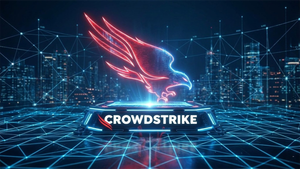
Many small-cap stocks have limited Wall Street coverage, giving savvy investors the chance to act before everyone else catches on. But the flip side is that these businesses have increased downside risk because they lack the scale and staying power of their larger competitors.
These trade-offs can cause headaches for even the most seasoned professionals, which is why we started StockStory - to help you separate the good companies from the bad. That said, here are three small-cap stocks to swipe left on and some alternatives you should look into instead.
Lancaster Colony (LANC)
Market Cap: $4.92 billion
Known for its frozen garlic bread and Parkerhouse rolls, Lancaster Colony (NASDAQ: LANC) sells bread, dressing, and dips to the retail and food service channels.
Why Is LANC Not Exciting?
- Annual revenue growth of 5.4% over the last three years was below our standards for the consumer staples sector
- Subscale operations are evident in its revenue base of $1.89 billion, meaning it has fewer distribution channels than its larger rivals
- Commoditized products, bad unit economics, and high competition are reflected in its low gross margin of 23.3%
Lancaster Colony is trading at $172.87 per share, or 24.4x forward P/E. Check out our free in-depth research report to learn more about why LANC doesn’t pass our bar.
Sabre (SABR)
Market Cap: $743.7 million
Originally a division of American Airlines, Sabre (NASDAQ: SABR) is a technology provider for the global travel and tourism industry.
Why Are We Cautious About SABR?
- Sluggish trends in its central reservation system transactions suggest customers aren’t adopting its solutions as quickly as the company hoped
- Negative free cash flow raises questions about the return timeline for its investments
- Depletion of cash reserves could lead to a fundraising event that triggers shareholder dilution
Sabre’s stock price of $1.88 implies a valuation ratio of 5.9x forward P/E. Read our free research report to see why you should think twice about including SABR in your portfolio.
Ingram Micro (INGM)
Market Cap: $4.41 billion
Operating as the crucial link in the global technology supply chain with a presence in 57 countries, Ingram Micro (NYSE: INGM) is a global technology distributor that connects manufacturers with resellers, providing hardware, software, cloud services, and logistics expertise.
Why Is INGM Risky?
- Scale is a double-edged sword because it limits the company’s growth potential compared to its smaller competitors, as reflected in its below-average annual revenue increases of 2% for the last five years
- Incremental sales over the last two years were much less profitable as its earnings per share fell by 14.5% annually while its revenue grew
- Ability to fund investments or reward shareholders with increased buybacks or dividends is restricted by its weak free cash flow margin of 0.4% for the last five years
At $18.76 per share, Ingram Micro trades at 6x forward P/E. To fully understand why you should be careful with INGM, check out our full research report (it’s free).
High-Quality Stocks for All Market Conditions
Trump’s April 2025 tariff bombshell triggered a massive market selloff, but stocks have since staged an impressive recovery, leaving those who panic sold on the sidelines.
Take advantage of the rebound by checking out our Top 5 Strong Momentum Stocks for this week. This is a curated list of our High Quality stocks that have generated a market-beating return of 183% over the last five years (as of March 31st 2025).
Stocks that made our list in 2020 include now familiar names such as Nvidia (+1,545% between March 2020 and March 2025) as well as under-the-radar businesses like the once-micro-cap company Kadant (+351% five-year return). Find your next big winner with StockStory today for free. Find your next big winner with StockStory today. Find your next big winner with StockStory today
StockStory is growing and hiring equity analyst and marketing roles. Are you a 0 to 1 builder passionate about the markets and AI? See the open roles here.





